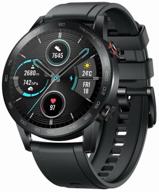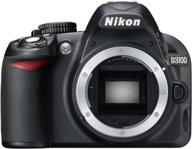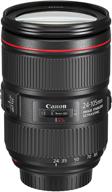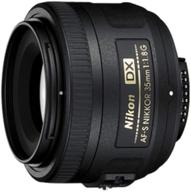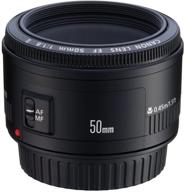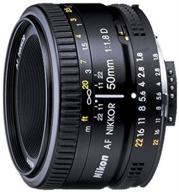
Canon EF 70-300mm f/4-5.6 IS USM Lens - Optimized for Canon EOS SLR Cameras Review
37
·
Very good

Media
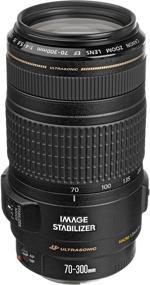
Details
| Brand | Canon |
|---|---|
| Lens Type | Telephoto |
| Compatible Mountings | Canon EF |
| Camera Lens Description | 300 millimetres |
| Maximum Focal Length | 300 Millimeters |
Description of Canon EF 70-300mm f/4-5.6 IS USM Lens - Optimized for Canon EOS SLR Cameras
Unleash Your Photography Potential with the Canon 70-300mm 4-5.6 Lens
Capture stunning, professional-quality images with the Canon 70-300mm 4-5.6 Lens. Designed specifically for Canon EOS SLR cameras, this telephoto zoom lens is a must-have accessory for both amateur and professional photographers. With its versatile focal length range of 70-300mm, you can effortlessly zoom in on distant subjects, bringing them closer to you with exceptional clarity.
Exceptional Optical Performance and Advanced Features
Equipped with a maximum aperture of f/4.5-5.6, the Canon 70-300mm lens allows for superior light-gathering capability, ensuring bright and detailed images even in challenging lighting conditions. The lens features a 3-stop Image Stabilizer that effectively reduces camera shake, resulting in sharper handheld shots. The ring-type ultra-sonic monitor (USM) enables quick and silent autofocus, enabling you to capture fleeting moments with ease.
One standout feature of this lens is its electro-magnetic diaphragm (EMD), which creates a beautiful, blurred background when shooting at large apertures. This adds depth and dimension to your photographs, making your subjects truly stand out. Additionally, the lens is equipped with Super Spectra lens coating and lens element shaping to suppress flare and ghosting, delivering images with exceptional clarity and contrast.
Enhance Your Photography Kit with Canon's 70-300mm 4-5.6 Lens
If you're an avid photographer looking to expand your creative possibilities, the Canon 70-300mm 4-5.6 Lens is a fantastic addition to your camera gear. Whether you're shooting wildlife, sports, or landscapes, this lens provides the versatility and reach needed to capture breathtaking images. Its Macro Focus Range of 1.50m allows you to explore close-up photography, revealing intricate details that might otherwise go unnoticed.
Pair this lens with your Canon EOS SLR camera and experience the world of photography like never before. Unlock new perspectives, experiment with different compositions, and let your creativity flourish. The Canon 70-300mm 4-5.6 Lens is the perfect tool for photographers who want to take their skills to the next level and create captivating images that leave a lasting impression.
Who Can Benefit from the Canon 70-300mm 4-5.6 Lens?
The Canon 70-300mm 4-5.6 Lens is a versatile accessory that caters to a wide range of photographers. Whether you're a hobbyist looking to capture stunning landscapes or a professional photographer seeking to expand your lens collection, this product offers exceptional value and performance. Wildlife photographers will appreciate the lens's zoom range, allowing them to capture detailed shots of elusive animals from a safe distance. Sports photographers can take advantage of the lens's quick autofocus and image stabilization to freeze action-packed moments with precision. Additionally, the lens is ideal for portrait photographers who want to create beautifully blurred backgrounds that make their subjects pop.
Here are some areas where the Canon 70-300mm 4-5.6 Lens can be utilized:
70-300mm telephoto zoom lens with f/4.5-5.6 maximum aperture for Canon EOS SLR cameras. 3-stop Image Stabilizer for reducing camera shake; ring-type ultra-sonic monitor (USM), Macro Focus Range : 1.50 m. Electro-magnetic diaphragm (EMD) helps create attractive background at large apertures. Super Spectra lens coating and lens element shaping suppresses flare and ghosting,Filter Thread: 58 mm. Suitable for Nature/concert/potrait and close up/product photography. Measures 3 inches in diameter and 5.6 inches long; weighs 22.2 ounces; 1-year warranty.
- Zoom with stub.
- From 200 to 300 everything is blurry, there is no focus.
- at least I did not notice.
- The main disadvantage is a miss at max distance, sometimes you need to use your hands, and where without them.
- Pricing, focal length, as well as the requirement of a 300 stub, which is effective provided that the hands do not tremble too much. When viewed in magnification as well as macro, the background is interestingly blurred by this effect. My setup consists of a Canon 550 and an EX580/. Those who are interested in a telephoto lens and are sure of their abilities should use the lens without a stabilizer. cheaper for someone just starting off, as I would recommend. Invest in a lens hood as soon as possible.
- You can only take pictures of them during the daytime or with a flash (the puff from the camera is not very weak). If you are taking pictures in the evening, I suggest switching to manual focus so that you are less upset when you watch the footage. The fact that you have to switch to manual mode is perhaps the only drawback to this decision.
- - Skill in manual labor, physical fortitude, and dependability (I took a tumble and made it through everything unscathed, escape with just a scratch on the case. There was no discernible change to the optics as a result. - Powerful dual-mode stabilizer (regular and for shooting in wiring) - Working range Up to 200 millimeters, a very pleasant and juicy picture; smooth, pleasant movement of the zoom ring. - Excellent sharpness in the range of 70-200mm; sharpness acceptable for amateur photography in the range of 200-300mm. If you select for the beginner glasses in the first price group, you'll be able to get a sense of the genuine thing in your hands: focusing that is both quick and precise. - An EF mount - 58mm filters that are both affordable and compact
- - A stabilizer that consumes a lot of energy. When using Live View and the video mode, the battery drains at an alarmingly rapid rate. The rest are more features that you should be aware of, such as the fact that the front lens rotates when focusing, the trunk extends to a decent length and can drag dust inside, the stabilizer is noisy when shooting video, and the sharpness in the 300 mm position is only good for publishing on the internet and printing 10x15. If the lens is not focused at infinity, then you will need to first switch to manual mode and tighten the ring before you can roll up the exit pipe. This is something that many people have already mentioned. While autofocus is engaged, the focus ring cannot be turned manually by the photographer.
- An good stabilizer, pleasing focusing speed, highly sharp in the range of 70-220, reproduces colors accurately, and produces gorgeous bokeh, particularly in backlight. design that has been given considerable care, as well as the availability of a trunk lock.
- I got it for 15,000 dollars, and I am quite happy with that decision; but, it is currently in certain regions where it costs over 20,000 dollars to fill up. Yet, the price is far too high. The picture quality in the range from 220 to 300 millimeters is inconsistent, particularly in low-light environments; this is the most significant limitation; other from it, there are no other significant limitations.
- Because of how quickly the camera can focus, I am hard-pressed to think of anything else that could be improved upon. Stabilizer. Extremely sharp (at 70, the sharpness is almost pixel-by-pixel) between 70 and 200. Price.
- Front lens that can rotate. There is no further cause for complaint.
- The focusing speed is such that I have little idea of what else you could wish for. Stabilizer. Very sharp (at 70, almost pixel-by-pixel sharpness) at 70-200. Price.
- Rotating front lens. Nothing more to complain about.








